ESOMAR 2025: Innovation Only Matters When It Delivers Real Results
Published on
October 9, 2025
Written by
Leo Gotheil

Table of contents
There’s a special kind of energy you only find at ESOMAR.
The kind that reminds you this industry doesn’t move forward through competition — it moves through curiosity, openness, and shared progress.
After an incredible experience last year in Athens, returning to ESOMAR 2025 in Prague felt like coming back to a familiar community — one that’s growing bolder, faster, and more united around the idea that innovation is no longer about what’s next, but what’s working right now.
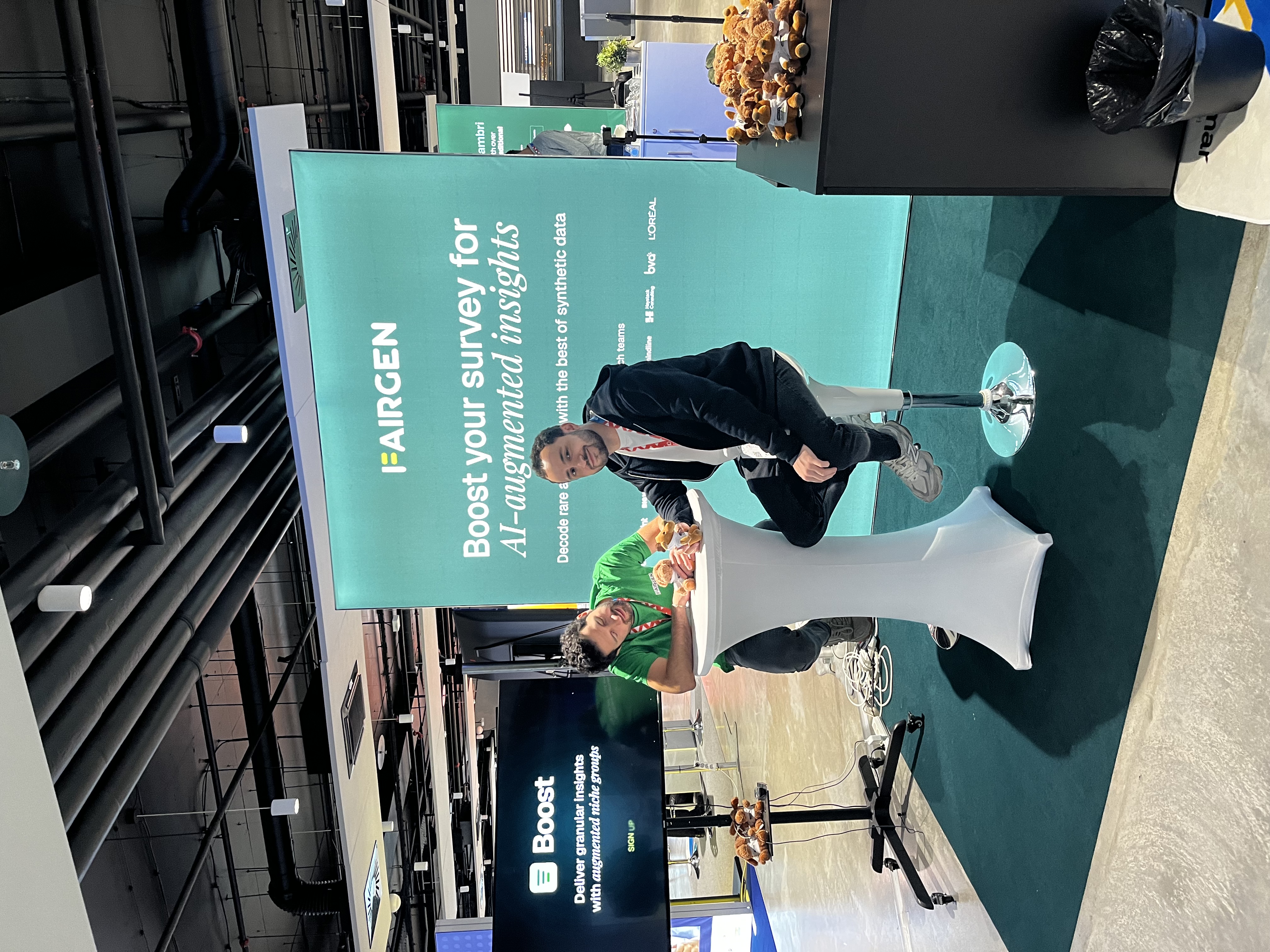
Conversations that matter
Our booth became a meeting point for ideas and people from every corner of the world — brands, market research agencies, and panel providers all eager to exchange experiences, test assumptions, and explore new ways to make data work harder and smarter.
The energy was unmistakable: this industry is ready to take the leap.
Researchers aren’t asking whether synthetic data belongs in their toolkit anymore — they’re asking how to use it responsibly, transparently, and at scale.
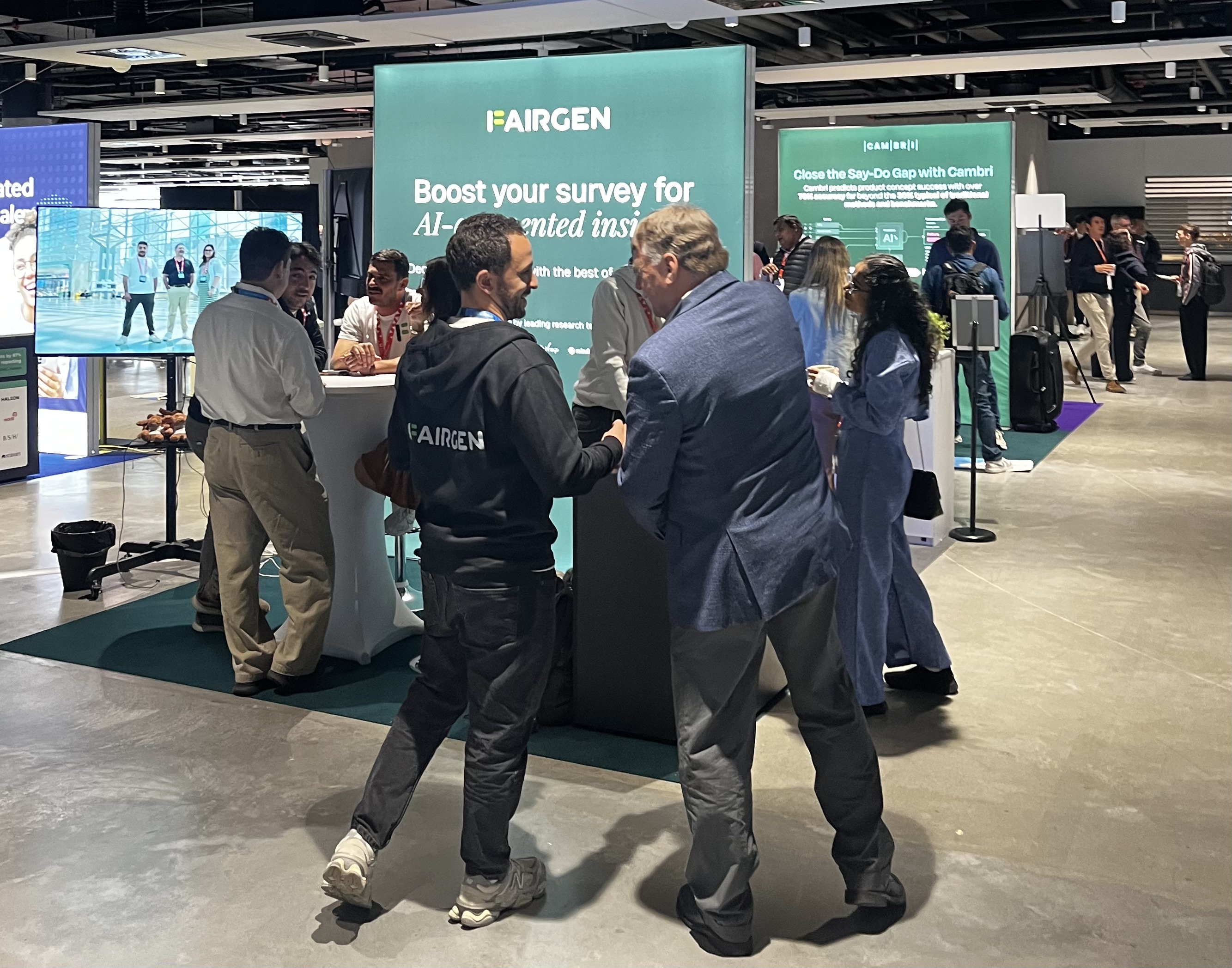
Helping L’Oréal and IFOP bring rare audiences Into view
Among the week’s highlights was our joint presentation with L’Oréal and IFOP.
When Nadia Obukhova, Global Consumer Insights Manager at L’Oréal, and Thomas Duhard, Head of Data Projects at IFOP, approached us, they were looking to solve a challenge many research teams face:
how to reliably include rare, high-value audiences in quantitative research — without compromising rigor or escalating costs.
Together, we built an approach grounded in first-party data and careful validation.
Fairgen’s augmentation helped extend the reach of existing samples, while preserving the integrity of the underlying research logic.
The outcome: greater stability across markets, reduced error margins, and richer insights into previously hard-to-measure segments.
But what we value most from that collaboration is not just the results — it’s the process.
Three teams working hand in hand to make complex research challenges solvable, one step at a time.
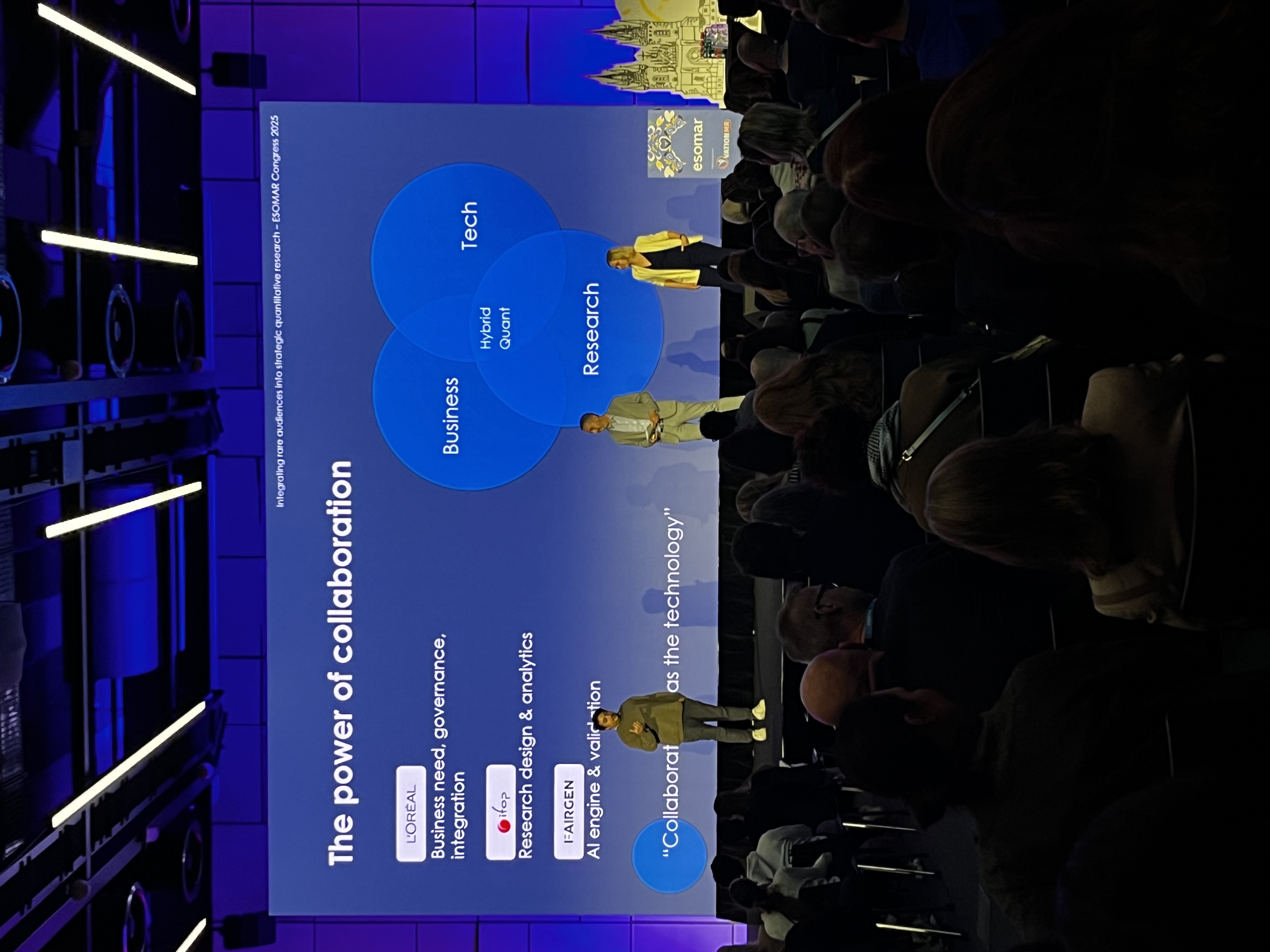
Presented by Nadia Obukhova (L'oréal), Thomas Duhard (IFOP), and Samuel Coen (Fairgen) at ESOMAR 2025
Google APAC, Macromill, and the industry’s next leap
Later in the week, we watched Minh Nguyen, PhD, from Google APAC, take the stage alongside Macromill to share their work on recalibrating synthetic data in brand lift research — powered by Fairgen technology.
Their results were impressive: more reliable reads in small segments, stronger accuracy in brand lift metrics, and faster access to insights that would have been out of reach with traditional sampling alone.
Seeing a packed room of researchers, brands, and data scientists engage with that presentation was energizing.
It showed how quickly the field is evolving — and how trusted, validated AI methods are becoming part of the new normal for research leaders worldwide.
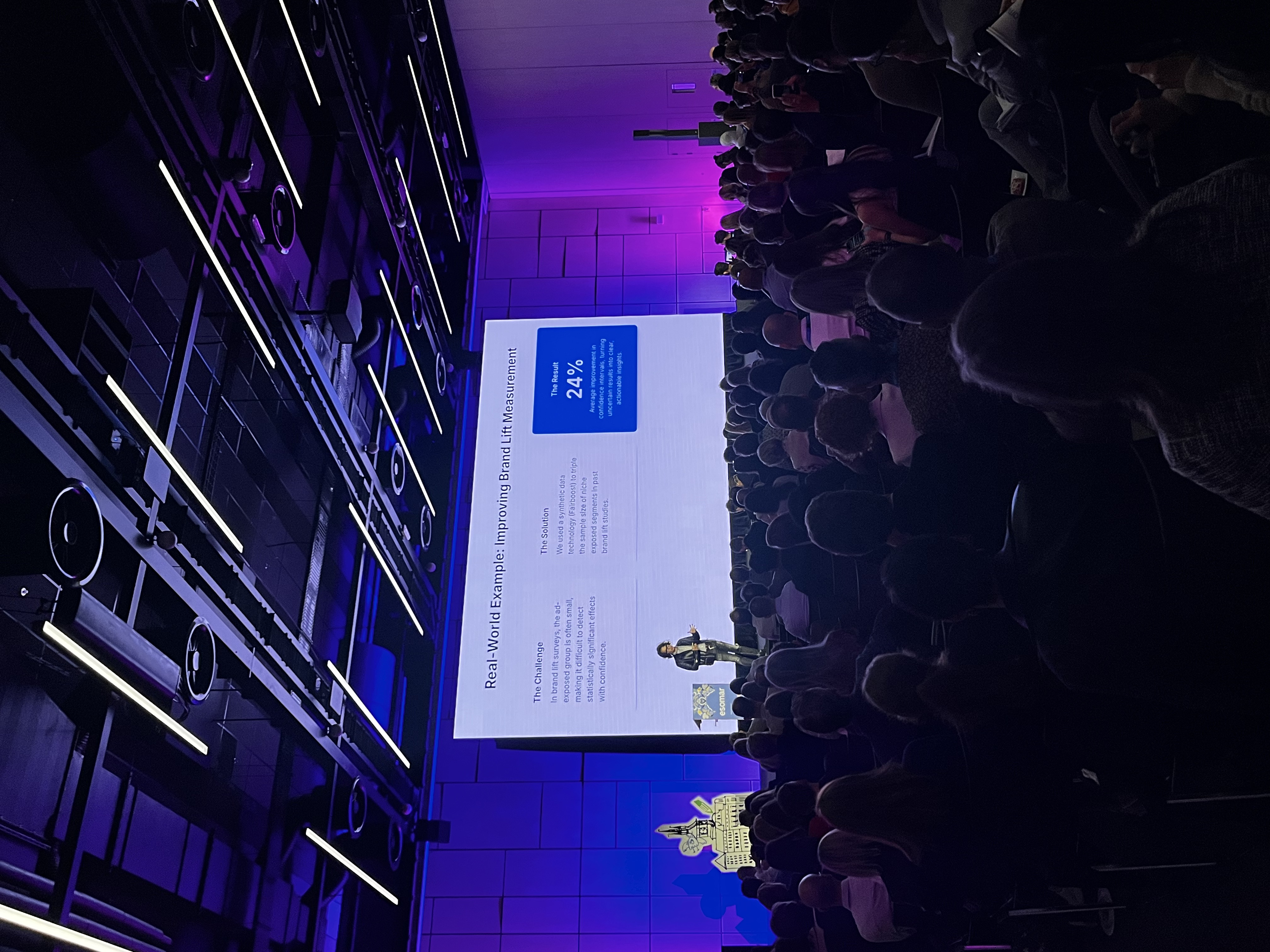
Presented by Minh Nguyen, PhD, Google APAC, at ESOMAR 2025
A Community in motion
What makes ESOMAR special isn’t just the content — it’s the conversations that happen in between.
We shared ideas, learned from peers, and heard stories from research teams tackling everything from fieldwork efficiency to data ethics.
Those discussions — at our booth, in hallways, and over coffee — reminded us that this is a community built on shared curiosity and mutual respect.
We’re proud to be part of it.
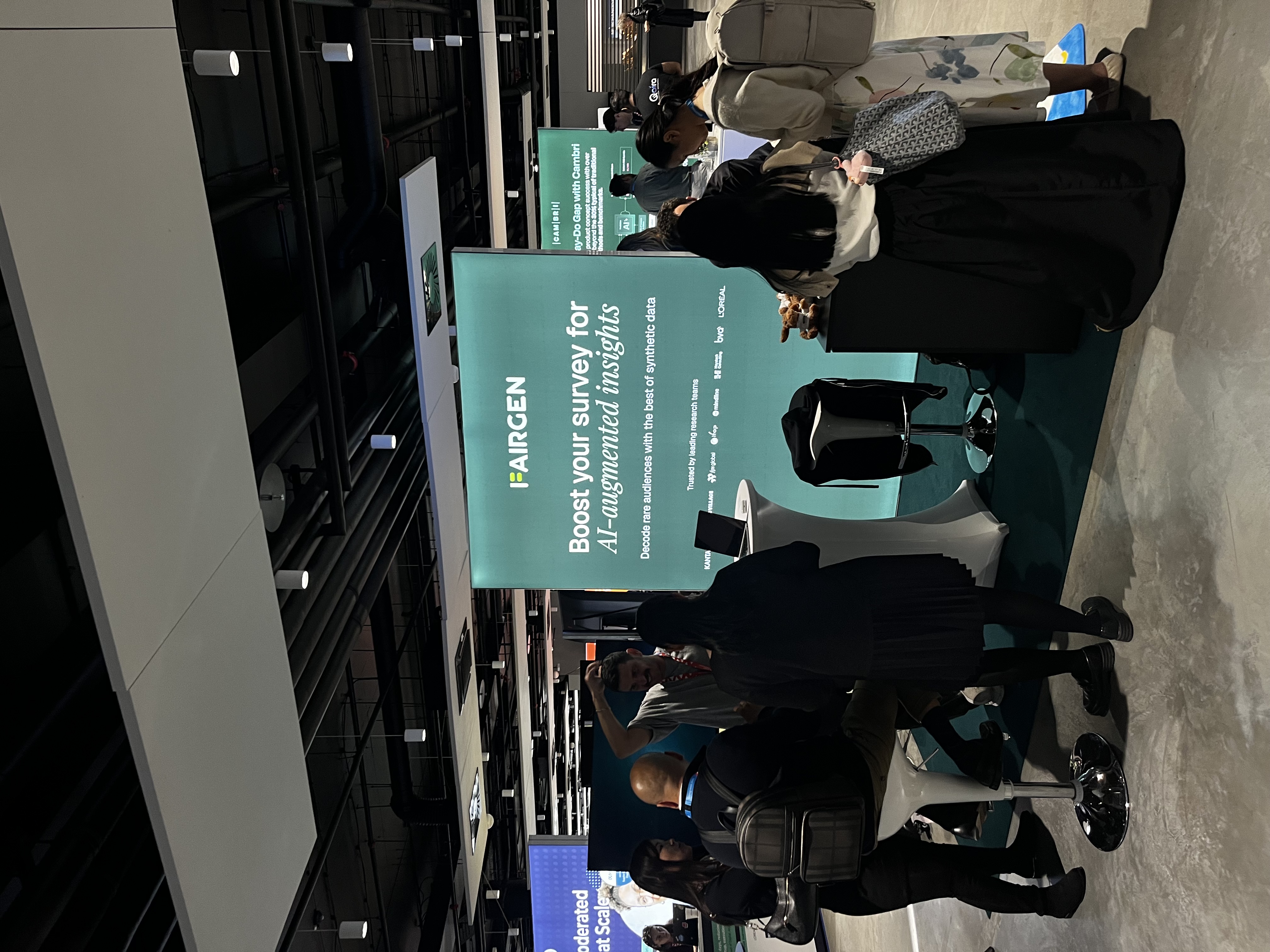
Looking ahead
Prague was more than a conference; it was a sign of momentum.
We saw first-hand that innovation in market research is no longer about bold predictions — it’s about practical transformation.
We’re grateful for every conversation, every handshake, and every shared idea that’s helping shape a more reliable and inclusive future for research.
Because in the end, innovation only matters when it delivers real results — for brands, for researchers, and for the people they aim to understand.
There’s a special kind of energy you only find at ESOMAR.
The kind that reminds you this industry doesn’t move forward through competition — it moves through curiosity, openness, and shared progress.
After an incredible experience last year in Athens, returning to ESOMAR 2025 in Prague felt like coming back to a familiar community — one that’s growing bolder, faster, and more united around the idea that innovation is no longer about what’s next, but what’s working right now.

Conversations that matter
Our booth became a meeting point for ideas and people from every corner of the world — brands, market research agencies, and panel providers all eager to exchange experiences, test assumptions, and explore new ways to make data work harder and smarter.
The energy was unmistakable: this industry is ready to take the leap.
Researchers aren’t asking whether synthetic data belongs in their toolkit anymore — they’re asking how to use it responsibly, transparently, and at scale.

Helping L’Oréal and IFOP bring rare audiences Into view
Among the week’s highlights was our joint presentation with L’Oréal and IFOP.
When Nadia Obukhova, Global Consumer Insights Manager at L’Oréal, and Thomas Duhard, Head of Data Projects at IFOP, approached us, they were looking to solve a challenge many research teams face:
how to reliably include rare, high-value audiences in quantitative research — without compromising rigor or escalating costs.
Together, we built an approach grounded in first-party data and careful validation.
Fairgen’s augmentation helped extend the reach of existing samples, while preserving the integrity of the underlying research logic.
The outcome: greater stability across markets, reduced error margins, and richer insights into previously hard-to-measure segments.
But what we value most from that collaboration is not just the results — it’s the process.
Three teams working hand in hand to make complex research challenges solvable, one step at a time.

Presented by Nadia Obukhova (L'oréal), Thomas Duhard (IFOP), and Samuel Coen (Fairgen) at ESOMAR 2025
Google APAC, Macromill, and the industry’s next leap
Later in the week, we watched Minh Nguyen, PhD, from Google APAC, take the stage alongside Macromill to share their work on recalibrating synthetic data in brand lift research — powered by Fairgen technology.
Their results were impressive: more reliable reads in small segments, stronger accuracy in brand lift metrics, and faster access to insights that would have been out of reach with traditional sampling alone.
Seeing a packed room of researchers, brands, and data scientists engage with that presentation was energizing.
It showed how quickly the field is evolving — and how trusted, validated AI methods are becoming part of the new normal for research leaders worldwide.

Presented by Minh Nguyen, PhD, Google APAC, at ESOMAR 2025
A Community in motion
What makes ESOMAR special isn’t just the content — it’s the conversations that happen in between.
We shared ideas, learned from peers, and heard stories from research teams tackling everything from fieldwork efficiency to data ethics.
Those discussions — at our booth, in hallways, and over coffee — reminded us that this is a community built on shared curiosity and mutual respect.
We’re proud to be part of it.

Looking ahead
Prague was more than a conference; it was a sign of momentum.
We saw first-hand that innovation in market research is no longer about bold predictions — it’s about practical transformation.
We’re grateful for every conversation, every handshake, and every shared idea that’s helping shape a more reliable and inclusive future for research.
Because in the end, innovation only matters when it delivers real results — for brands, for researchers, and for the people they aim to understand.
Subscribe to our newsletter


